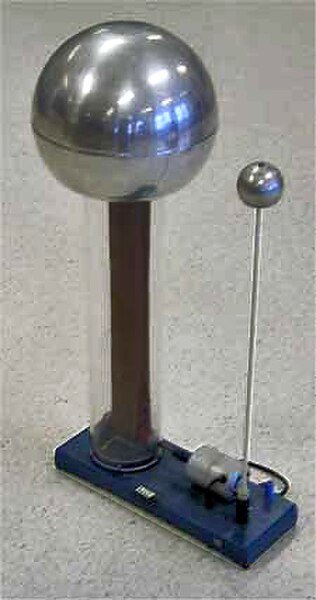Robert Jemison Van de Graaff was an American physicist, noted for his design and construction of high-voltage Van de Graaff generators. He spent most of his career in the Massachusetts Institute of Technology (MIT).
Robert J. Van de Graaff
Robert Van de Graaff (left) at Utrecht University in 1966
A Van de Graaff generator is an electrostatic generator which uses a moving belt to accumulate electric charge on a hollow metal globe on the top of an insulated column, creating very high electric potentials. It produces very high voltage direct current (DC) electricity at low current levels. It was invented by American physicist Robert J. Van de Graaff in 1929.
The potential difference achieved by modern Van de Graaff generators can be as much as 5 megavolts. A tabletop version can produce on the order of 100 kV and can store enough energy to produce visible electric sparks. Small Van de Graaff machines are produced for entertainment, and for physics education to teach electrostatics; larger ones are displayed in some science museums.
Small Van de Graaff generator used in science education
This Van de Graaff generator of the first Hungarian linear particle accelerator achieved 700 kV in 1951 and 1000 kV in 1952.
A Van de Graaff particle accelerator in a pressurized tank at Pierre and Marie Curie University, Paris
Spark made by the Van de Graaff generator at The Museum of Science in Boston, Massachusetts






